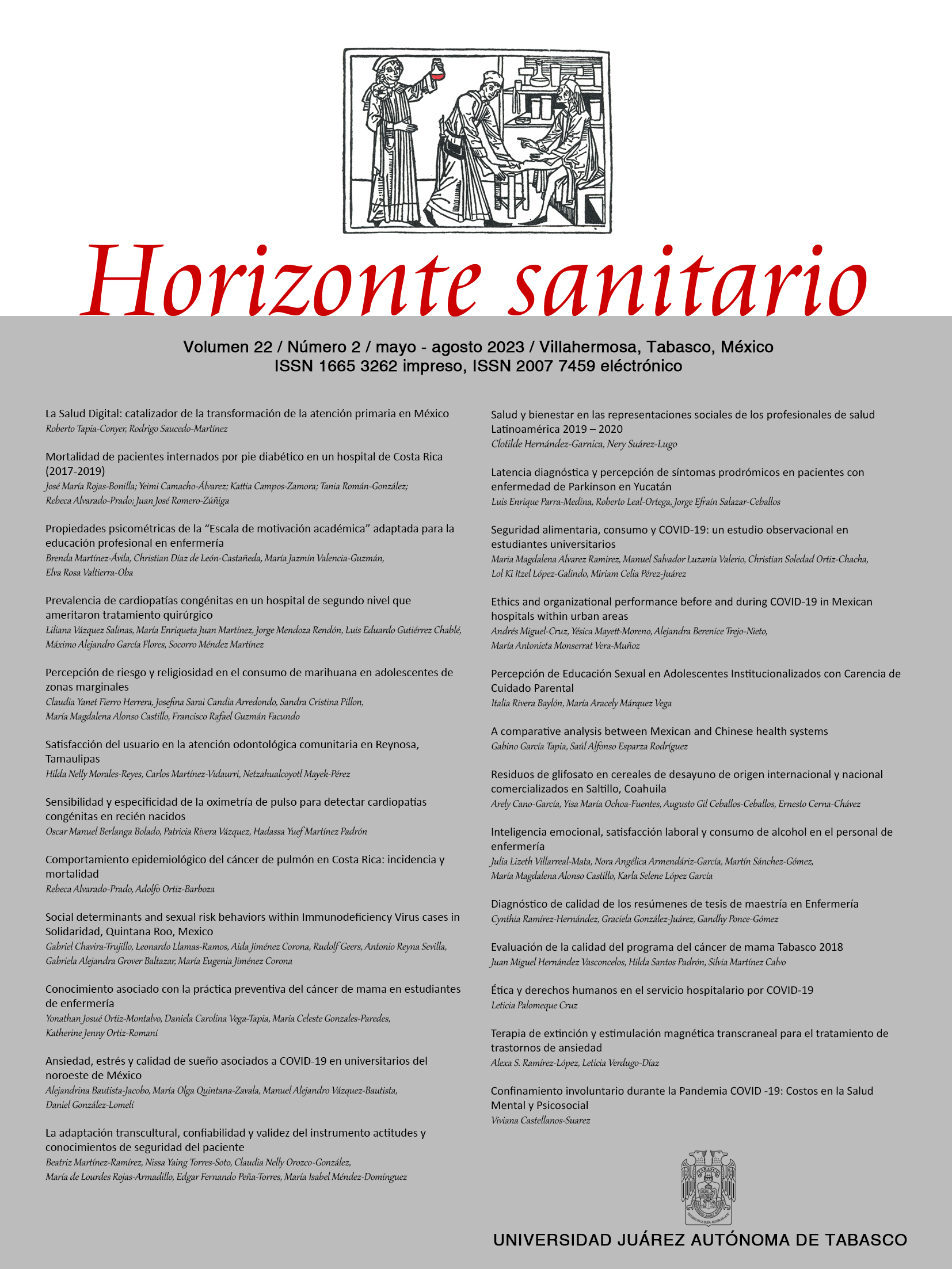Prevalence of surgical treatment in congenital heart disease
DOI:
https://doi.org/10.19136/hs.a22n2.5276Abstract
Objective: To determine the prevalence of congenital heart disease (CHD) in a second level hospital that required surgical treatment.
Material and methods: Descriptive study carried out in patients diagnosed with CHD in a second level hospital of the Mexican Social Security Institute (IMSS) in Puebla, Mexico during the period 2016-2017. Records of full-term newborns (NB) up to 14 years of age analyzing sociodemographic variables, type of CHD and short-circuit, presence of associated anomalies, and referral to a third level hospital for surgical treatment were included. Data were collected and analyzed using the SPSS Statistics v25 program.
Results: The hospital prevalence of CHD that required referral to the third level hospital for surgical treatment was 6.8% in 2016 and 6.6% in 2017; the median age was 1 year. The 77.2% of CHDs were non-cyanotic, patent ductus arteriosus (PDA) was the most common shunt, and 19.2% had Down syndrome as an associated congenital anomaly.
Conclusion: We obtained a similar prevalence to other regions of Mexico, with acyanotic CHD being the most frequent cause of surgical treatments. Timely detection and referral will improve care and quality of life in these patients.
Keywords: Congenital Heart Disease; Prevalence; Congenital Defects; Cardiology; Pediatrics.
Downloads
Downloads
Published
Issue
Section
License
Copyright (c) 2023 Horizonte Sanitario

This work is licensed under a Creative Commons Attribution-NonCommercial-ShareAlike 4.0 International License.


































